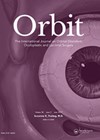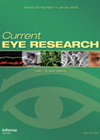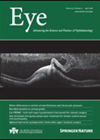You searched for "blind"
Game show freak
3 April 2023
| Peter Cackett
|
EYE - General
As a child of the 70s and 80s, there were limited television viewing opportunities. For the duration of the 70s there were only three channels, only moving to four with the launch of Channel 4 in 1982. Not only that,...
The results of the last survey Dec23
4 December 2023
| Amar Alwitry
|
EYE - General
*Please be aware that this data does not form part of a peer reviewed research study. The information therein should not be relied upon for clinical purposes but instead used as a guide for clinical practice and reflection. Hopefully by...
Psychiatric Consequences of Ophthalmic Disease
1 December 2013
| Amjad Akram, Masood Alam Shah
In part two of this series on ophthalmology and psychiatry, the authors will cover the possible psychiatric consequences of ophthalmic disease. The following conditions will be discussed: a. Black patch psychosis b. Psychological state in blindness c. Phobias in the...
Normative dimensions of the lacrimal gland
This article looks at the normative dimensions of the lacrimal gland in the axial and coronal plane on fat-suppressed T1 weighted contrast-enhanced magnetic resonance imaging (MRI). Previous data on this subject has come from computed tomography (CT). MRI is known...Meibomian gland alteration in patients with primary chronic dacryocystitis: An in vivo confocal microscopy study
Chronic dacryocystitis affects tear film functionality and can predispose to ocular surface disease, however the specific effect of chronic dacryocystitis on meibomian gland function has not been studied. This group therefore performed in vivo confocal microscopy in 28 patients’ eyes...Ranibizumab safety in pregnancy
1 December 2018
| Sofia Rokerya
|
EYE - Vitreo-Retinal
Vascular endothelial growth factor (VEGF) plays a pivotal role during pregnancy, and systemic anti-VEGF administration during this period should thus be avoided. VEGF is expressed in multiple embryonic and foetal tissues during development, with the highest levels found in the...
Retinal prosthetics: science fiction or a vision for the future?
“Is it a fact – or have I dreamt it – that, by means of electricity, the world of matter has become a great nerve, vibrating thousands of miles in a breathless point of time?” – Nathaniel Hawthorne, The House...Celebrating volunteer ophthalmic nurses on #InternationalNursesDay
12 May 2022
Eye News and eye care charity Orbis celebrate volunteer ophthalmic nurses who worked on the frontlines during the pandemic.
See sweet to C-suite: Carrie MacEwen
2 April 2025
| David Lockington
|
EYE - General
The business world tells us, “Know your why.” But increasingly, we live in a society where people think, “Why bother?” In this interview, David wants to know what makes Carrie MacEwen tick, and why she bothered to get involved locally,...
A focus on Pakistan’s growing eye care needs: over 43 million patients treated for curable blindness free of charge
5 February 2020
| Salina Zaheen, Yasmin Riaz
|
EYE - General
With 90% of the world’s visually impaired living in developing countries, Pakistan is no exception to this on-going global healthcare challenge. Despite massive leaps over the last few decades in targeting this issue, the World Health Organisation (WHO) reports that...
Introducing the Royal College of Nursing Ophthalmic Nursing Forum
4 February 2025
| Tendai Gwenhure
|
EYE - Cataract, EYE - Cornea, EYE - Glaucoma, EYE - Imaging, EYE - Neuro-ophthalmology, EYE - Oculoplastic, EYE - Oncology, EYE - Orbit, EYE - Paediatrics, EYE - Pathology, EYE - Refractive, EYE - Strabismus, EYE - Vitreo-Retinal, EYE - General
The Royal College of Nursing (RCN) represents nurses and nursing. While the terms ‘nurses’ and ‘nursing’ are used generically, membership is inclusive of a variety of clinical roles, including midwives, advanced nurse practitioners, advanced clinical practitioners, nurse consultants, registered nursing...
Unexpected diagnoses – stroke in children and homonymous hemianopia
1 February 2022
| Timothy Rajaratnam, Alexandros Kogiantis, Faye Barampouti
|
EYE - Neuro-ophthalmology, EYE - Imaging, EYE - General
We present the case of a 12-year-old child presenting with a few days history of left-sided visual loss. Upon further investigation with magnetic resonance imaging (MRI) she was unexpectedly diagnosed with a right-sided chronic posterior cerebral arterial territory infarct, causing...






